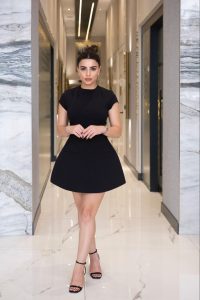In the quest to cultivate innovation in health informatics, strategies range from the Chief Medical Information Officer’s endorsement of a growth mindset to the implementation of cutting-edge technologies like blockchain for data security. Alongside an expert insight, we’ve gathered additional answers that reflect a diverse array of tactics employed by various professionals. These strategies have led to remarkable innovations, including the development of AI diagnostic tools and the utilization of open-source platforms.
- Embrace a Growth Mindset
- Prioritize Interoperability
- Develop AI Diagnostic Tools
- Utilize Open-Source Platforms
- Implement Agile Methodologies
- Secure Data with Blockchain
Embrace a Growth Mindset
To foster innovation in our health informatics team, we embraced a growth mindset, acknowledging that failure is part of progress. This approach led us to create a pre- and post-Clinical Decision Support (CDS) group of IT EHR analysts and informaticists. We meet before and after CDS sessions to refine our alerts, aiming to reduce cognitive overload and interruptions. One of our key successes is that our interruptive alerts now have action rates in the top quartile, even reaching the top decile.
A specific example comes from our intake process for CDS requests. By ensuring we gather all necessary information upfront, we streamline our workflow and make it easier for end users to monitor data over time. This method encourages them to treat interventions as PDSA cycles, fostering continuous improvement. This strategy not only drives innovation but also enhances the effectiveness of our clinical alerts, setting us apart in the field.
 Romil Chadha
Romil Chadha
Cmio, University of Kentucky Healthcare
Prioritize Interoperability
Prioritizing interoperability in health informatics helps to create a seamless flow of data between various health systems and technologies. By enabling different systems to communicate effectively, patient care becomes more holistic and efficient. Interoperability eliminates the barriers that traditionally impede the sharing of critical health information.
This harmonization of data can lead to improved outcomes and more individualized patient care strategies. As healthcare providers and technologists work together, they create a networked environment that supports the rapid exchange of information. Consider how connecting systems can improve your practice’s approach to patient care.
Develop AI Diagnostic Tools
Investing in the development of AI-driven diagnostic tools has the potential to revolutionize patient care by providing quicker, more accurate diagnoses. Artificial intelligence can analyze vast amounts of data in seconds, uncovering patterns and insights faster than humanly possible. These tools can support clinicians in identifying conditions early and improving the accuracy of diagnoses.
Moreover, they can be invaluable in areas with a scarcity of specialists. By integrating AI diagnostics into your healthcare services, you can enhance your capacity to provide timely, accurate care.
Utilize Open-Source Platforms
Encouraging the use of open-source collaboration platforms can significantly propel innovation in health informatics. Open-source platforms foster a culture of sharing and collective problem-solving among diverse participants. This approach allows for the rapid development and refinement of informatics tools, as contributions come from a wide array of experts and users.
With the collective intelligence of a global community, tackling complex health challenges becomes more feasible. How might your organization benefit from embracing open-source solutions to catalyze health informatics innovation?
Implement Agile Methodologies
Adopting agile methodologies in health informatics enables organizations to evolve their systems and practices with flexibility and responsiveness. Agile focuses on iterative development, allowing teams to quickly adapt to changes and continuously improve their processes. This can lead to more efficient project management and better alignment of health IT systems with the ever-changing needs of both patients and providers.
In an industry as dynamic as healthcare, staying nimble can make a significant difference in the quality of service delivery. Start exploring how agile practices can be implemented in your operations for enhanced adaptability and growth.
Secure Data with Blockchain
Leveraging blockchain technology in health informatics offers an advanced level of security for patients’ data. Blockchain’s distributed ledger provides a secure and immutable record of transactions, ensuring that patient information remains confidential and tamper-proof. This also facilitates trust between entities sharing sensitive data.
With blockchain, health organizations can ensure compliance with privacy regulations while fostering patient confidence in how their data is handled. Join the movement towards more secure data sharing by exploring blockchain solutions for your health informatics needs.













